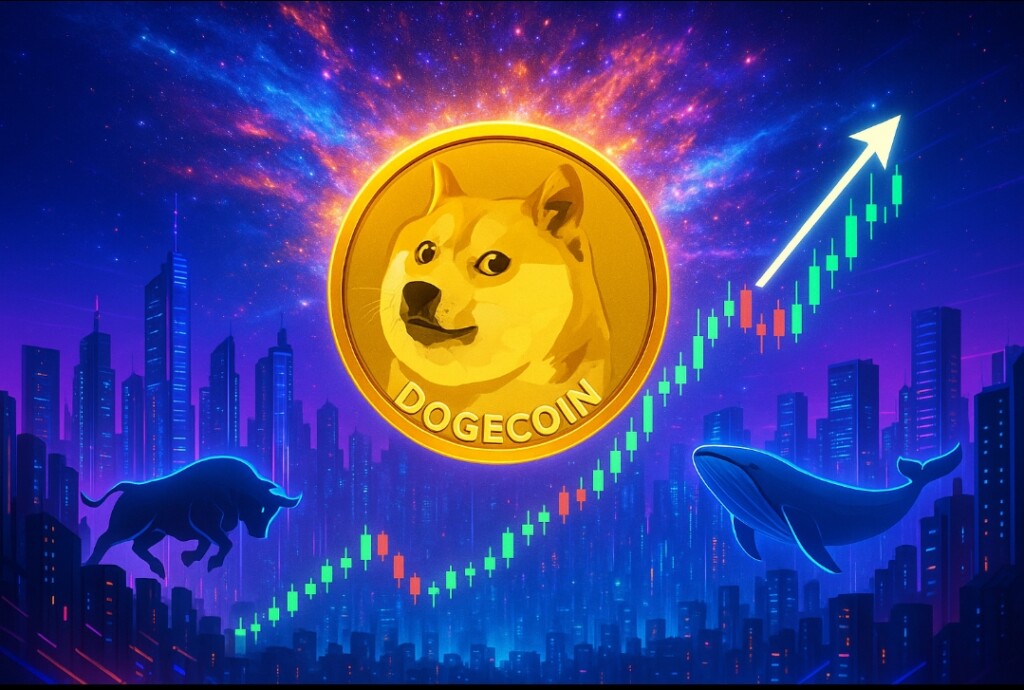A significant step forward for cross-chain interoperability has been taken by Wormhole, which announced its latest integration: bringing Dogecoin (DOGE) to the Solana blockchain.
Using its Native Token Transfers (NTT) framework and zero-knowledge proof (ZK-proof) technology, Wormhole is now allowing Dogecoin, a $35 billion market cap asset, to exist as a Solana-native token. This integration is an exciting next step for Dogecoin, allowing it to experiment with utility in what some consider the most performant of the large public blockchain ecosystems.
Wormhole is on a mission to connect multiple blockchains and allow assets to move freely across them. Dogecoin, now a meme with actual money-moving prospects, is the latest to get integrated into the decentralized finance space that mostly runs on the Ethereum blockchain, with some applications on Solana, a new high-performance blockchain.
From Meme to Multichain: Dogecoin Gains Utility on Solana
Solana is now the new home for Dogecoin. Think of it like this: Dogecoin lives on Solana, where it’s native and free to express itself. Unlike before, when it mostly operated in a way that’s analogous to living in a basement, wrapped up in other assets that were mostly just promises (Ethereum, we’re looking at you), now Dogecoin is out in the open and working with the ecosystem Solana has.
Wormhole’s Native Token Transfer framework enables cross-chain token movement that retains contract features. For the Dogecoin community, this means that integrity is preserved while using Dogecoin in Solana applications. It’s possible to do so without incurring the kind of odd workarounds that first converted Doge to an Ethereum token.
Dogecoin is now a Solana-native token. This means that it can interact in a much deeper way with all the components of the decentralized finance (DeFi) ecosystem that live on the Solana blockchain. This includes not just decentralized exchanges (where you can trade tokens), but also lending protocols, NFT marketplaces, and payment systems. Much of this is happening now, with hardly any friction, in Solana’s rapidly growing ecosystem. So users can leverage Dogecoin to do all sorts of things—in a decentralized, permissionless way—that really don’t require any kind of speculation.
Wormhole Expands Its Interoperability Reach
This integration marks the most recent achievement for Wormhole, a top interoperability protocol that keeps pushing the frontier in connecting assets and information across blockchains. The platform now links more than 30 blockchain networks and serves over 200 decentralized applications (dApps). It has enabled more than a million individual wallet interactions in the multichain across different sorts of chains, assuring its place as an early foundational layer in the emerging multichain Web3 universe.
Wormhole’s open-source messaging protocol is designed for scale and security. Harnessing the power of zero-knowledge proof technology and the flexibility of the NTT framework, Wormhole makes sure that token transfers are efficient and secure.
🔥 Wormhole Bridges Dogecoin to Solana@wormhole $W has announced a strategic integration to bring @dogecoin $DOGE to the #Solana blockchain using its Native Token Transfers framework and zero-knowledge proof technology. This move makes #DOGE a Solana-native token, expanding the… pic.twitter.com/RMrfWvLBXD
— Chain Broker 🇺🇦 (@chain_broker) May 23, 2025
ZK-proofs also serve as a way of adding another layer of (not quite necessary, given the previous two sentences) security to the sending and receiving of tokens across chains, helping to ensure against concerns like double-spending and other not-good-for-crypto things that could happen.
The bridge from Dogecoin to Solana demonstrates how Wormhole is advancing interoperability. The framework that underpins the bridge, the NTT (Network Transition Token) framework, is also set up to accommodate stablecoins, real-world assets, and other kinds of multichain tokens—those that span multiple blockchain networks and don’t exist solely on one network—that need to talk to each other across the different networks.
Strengthening Solana’s Position in the Multichain Economy
Wormhole enhances the utility of one of crypto’s most well-known tokens, Dogecoin, by bringing it to Solana. It also helps Solana in multichain crypto land because Solana is still working on user engagement and liquidity. Meanwhile, Wormhole itself is building a decent reputation in that regard.
The timing is especially pertinent because Solana is witnessing growing acceptance in decentralized finance, non-fungible tokens, and the gaming industry. It is broadening its asset support as a move to enhance the platform’s overall decentralized finance appeal—Mukul Kumar. Through native support for these high-volume assets, Solana hopes to lure more developers and users to its ecosystem.
This shift also synchronizes with Wormhole’s wider approach of channeling capital and involvement into ecosystems such as Solana. With this integration, Dogecoin is not just tucked away in a few specific use cases or constrained settings. It is taking on a more far-reaching role, backed by leading-edge cross-chain infrastructure and a dynamic blockchain ecosystem.
As the next phase of blockchain innovation takes hold, asset interoperability is emerging as a key theme. This is what a new alliance between Wormhole and Dogecoin could help to demonstrate. It’s a partnership that, in my view, provides a glimpse of what is becoming possible—from an interoperability perspective—when it comes to assets on the blockchain. It’s an example of how increasingly fluid assets are becoming, and across what types of ecosystems they are moving.
Disclosure: This is not trading or investment advice. Always do your research before buying any cryptocurrency or investing in any services.


No Comments